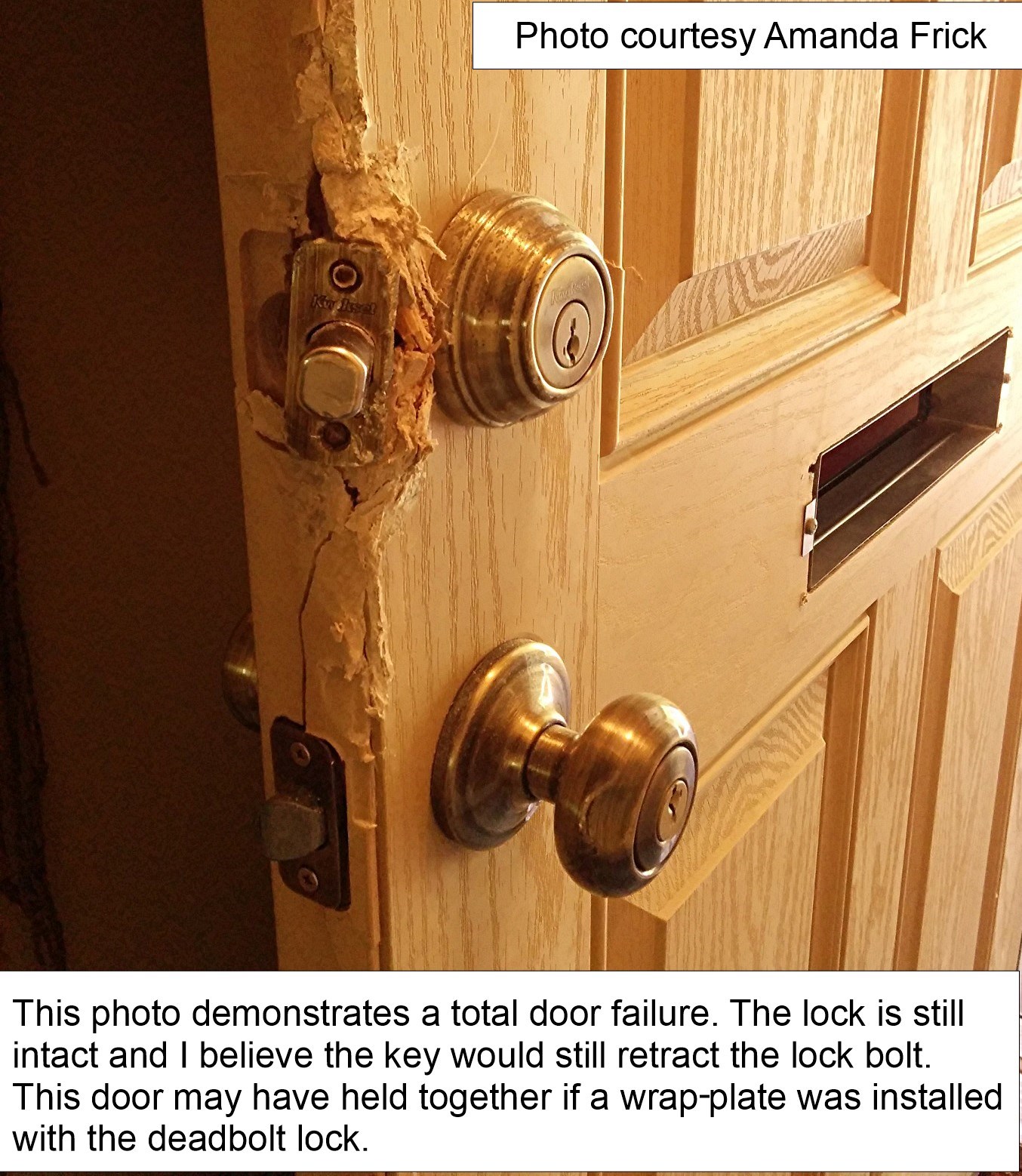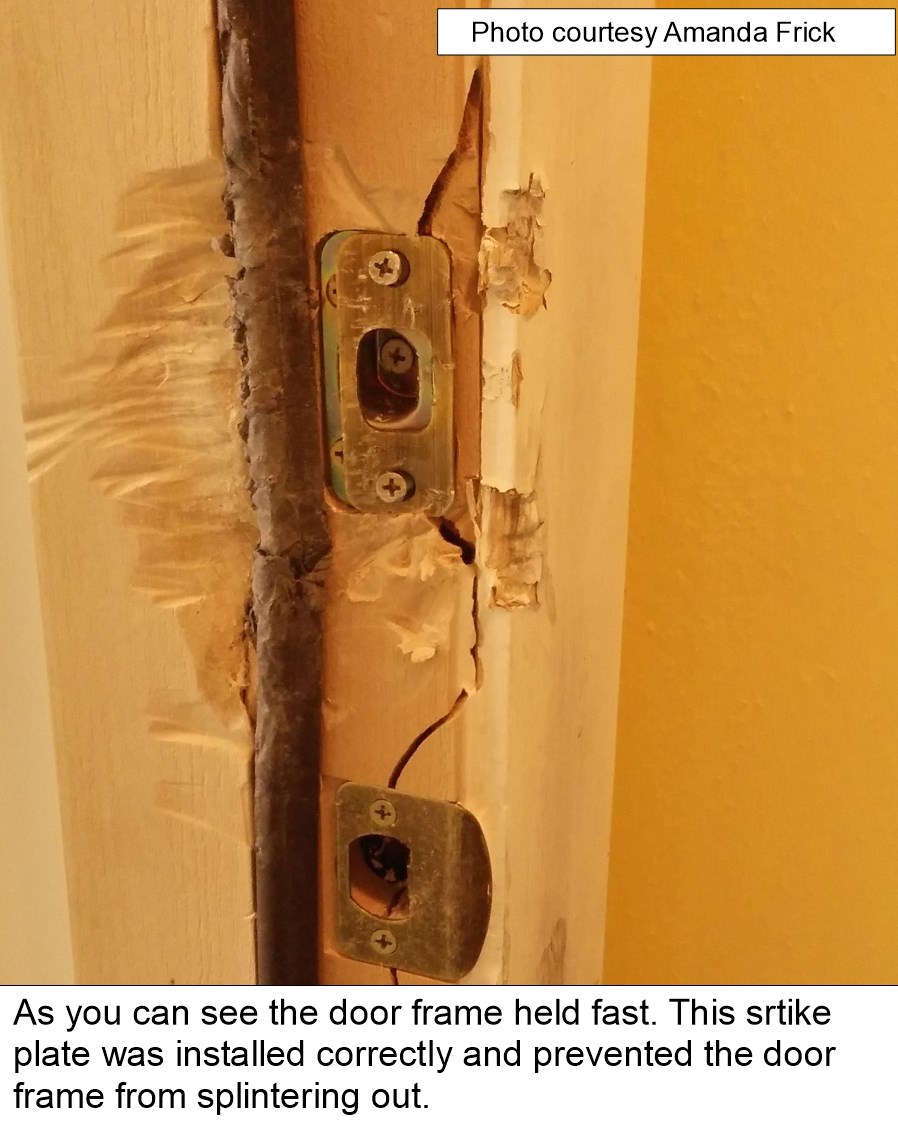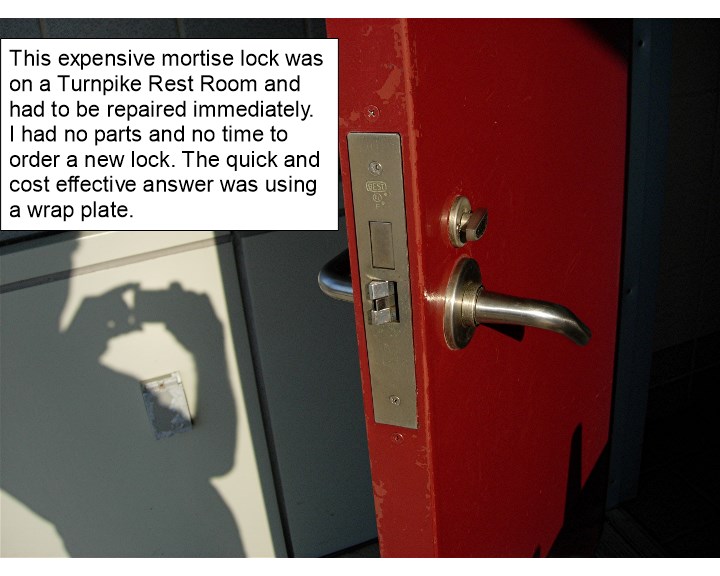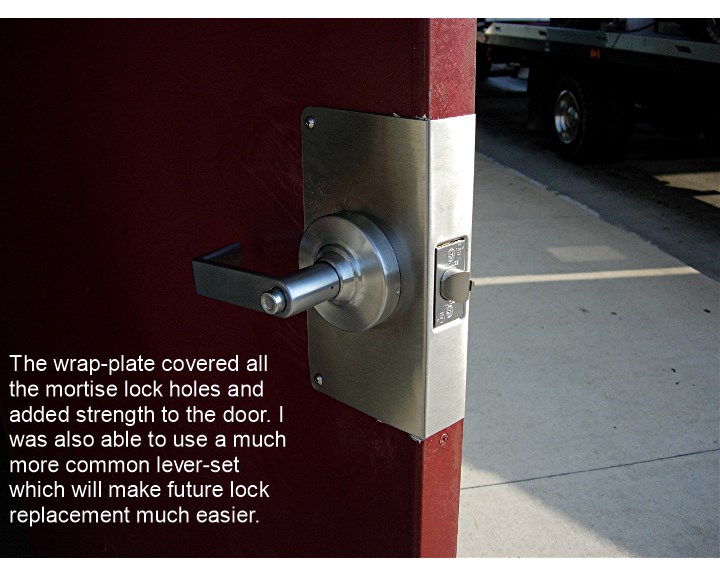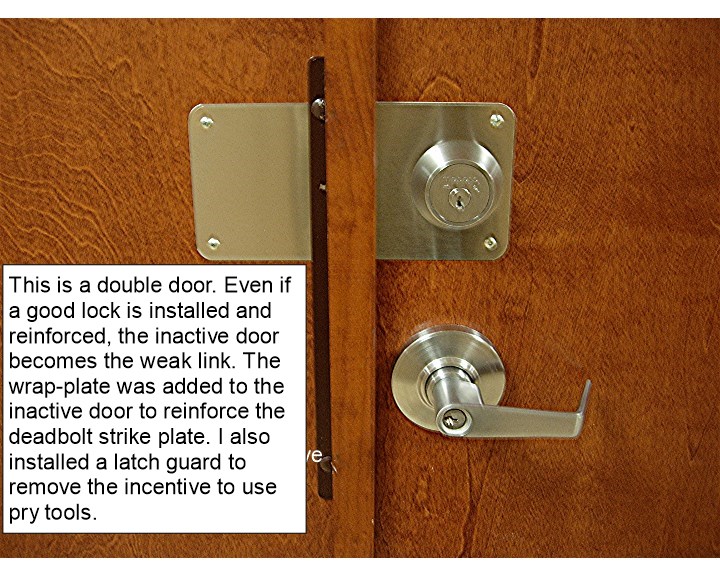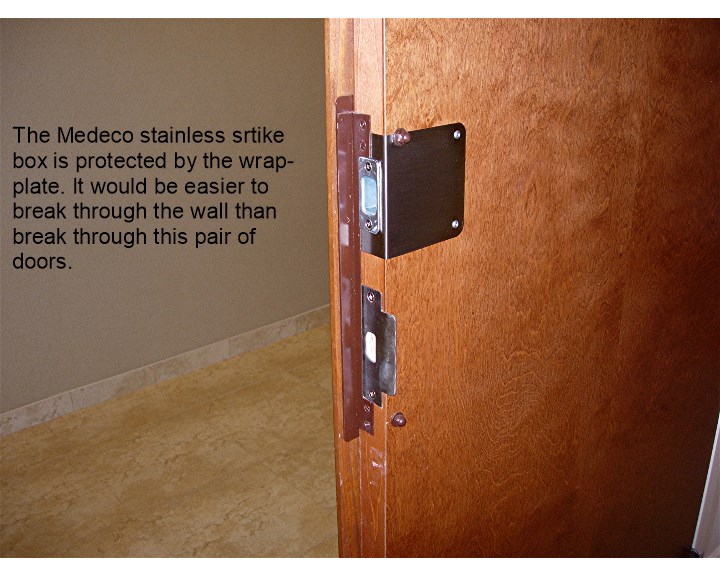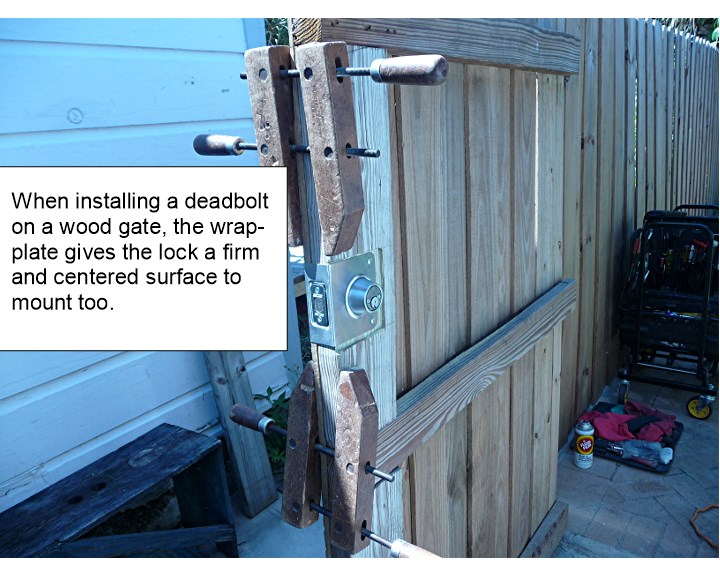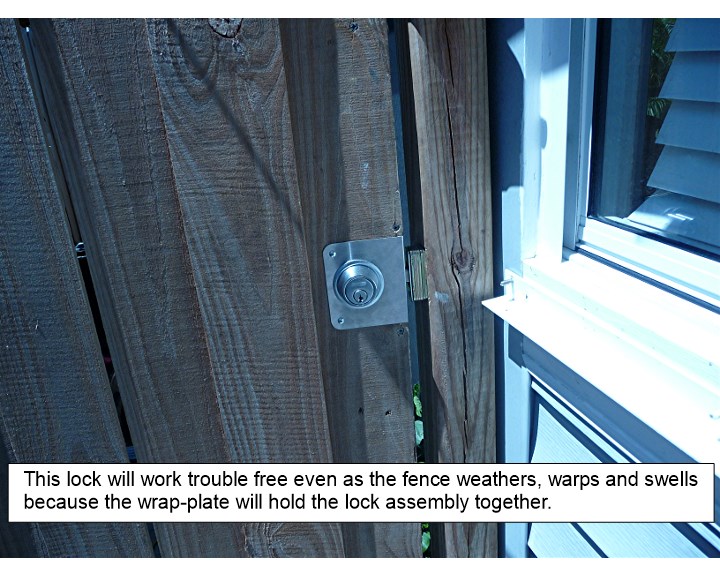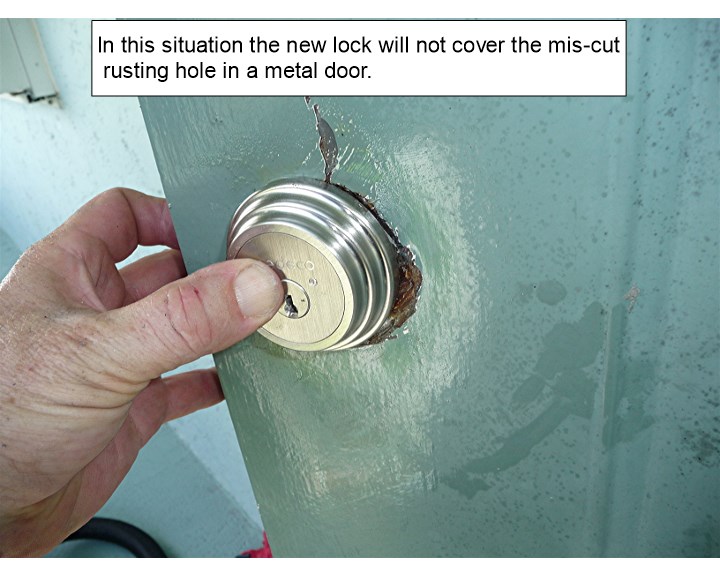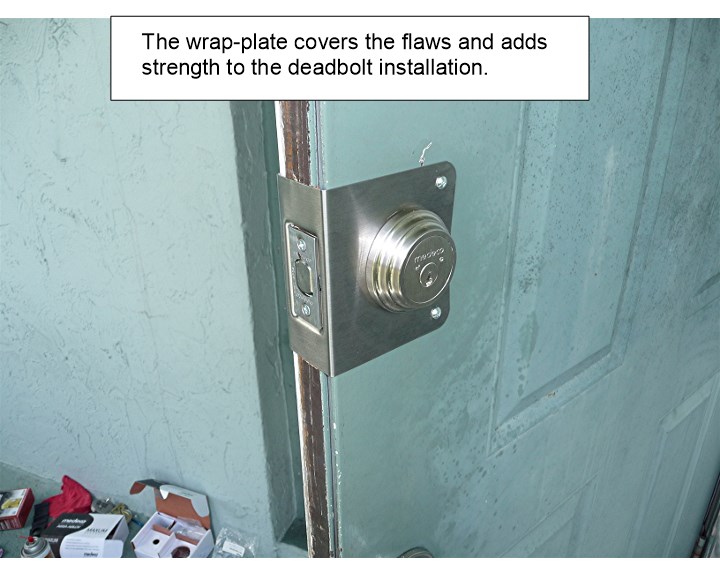Recently I received an email from a reader who had a question about a burgled home. The reader wanted to know if a stronger lock could be purchased for the front door which was kicked-in. I was sent some photos and given permission to use them in my blog.
When the break-in was first described to me I thought the lock bolt had bent on a 45 degree angle, which allowed the thieves to gain entry. I have seen this before with cheaper locks, where the bolt not only bends but is completely ripped out of the door. However when I saw the photo of the lock in the door it was obvious to me the break-in was the result of complete door failure. The door cracked under the duress and allowed the lock bolt to bend on a 45 degree angle.
This may have been prevented by installing a wrap-a-round plate with the deadbolt lock. Personally, I would not have recommended a wrap-plate with this door. The door looks strong enough on it’s own, and the wrap-plate may not look so good on the front door of the house. However, in this case I would have been wrong. The door looks strong, but in reality was only layers of synthetic material which simulated a wood door.
The wrap-a-round plate was first introduced by the MAG manufacturing company back in the 1970’s. Recently MAG ceased operations and the only company I know that makes wrap-plates is the Don-Jo Manufacturing Co. Don-Jo makes a wide variety of wrap-a-round plates for any combination of door thickness, back-set and desired color.
The wrap-a-round plate is an inexpensive way to repair a cracked door. The plate holds the door together and the new lock mounts on the plate. Larger plates which incorporate the knob and deadbolt can be purchased, as well as blank plates to cover over where a lock used to be.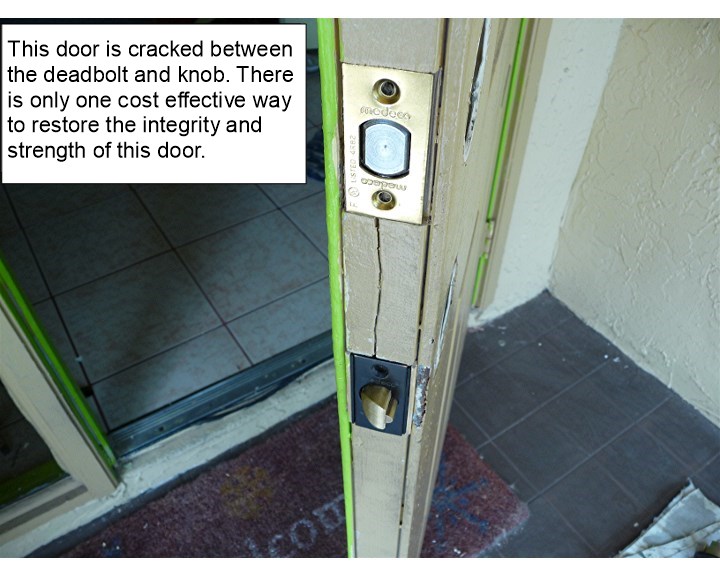
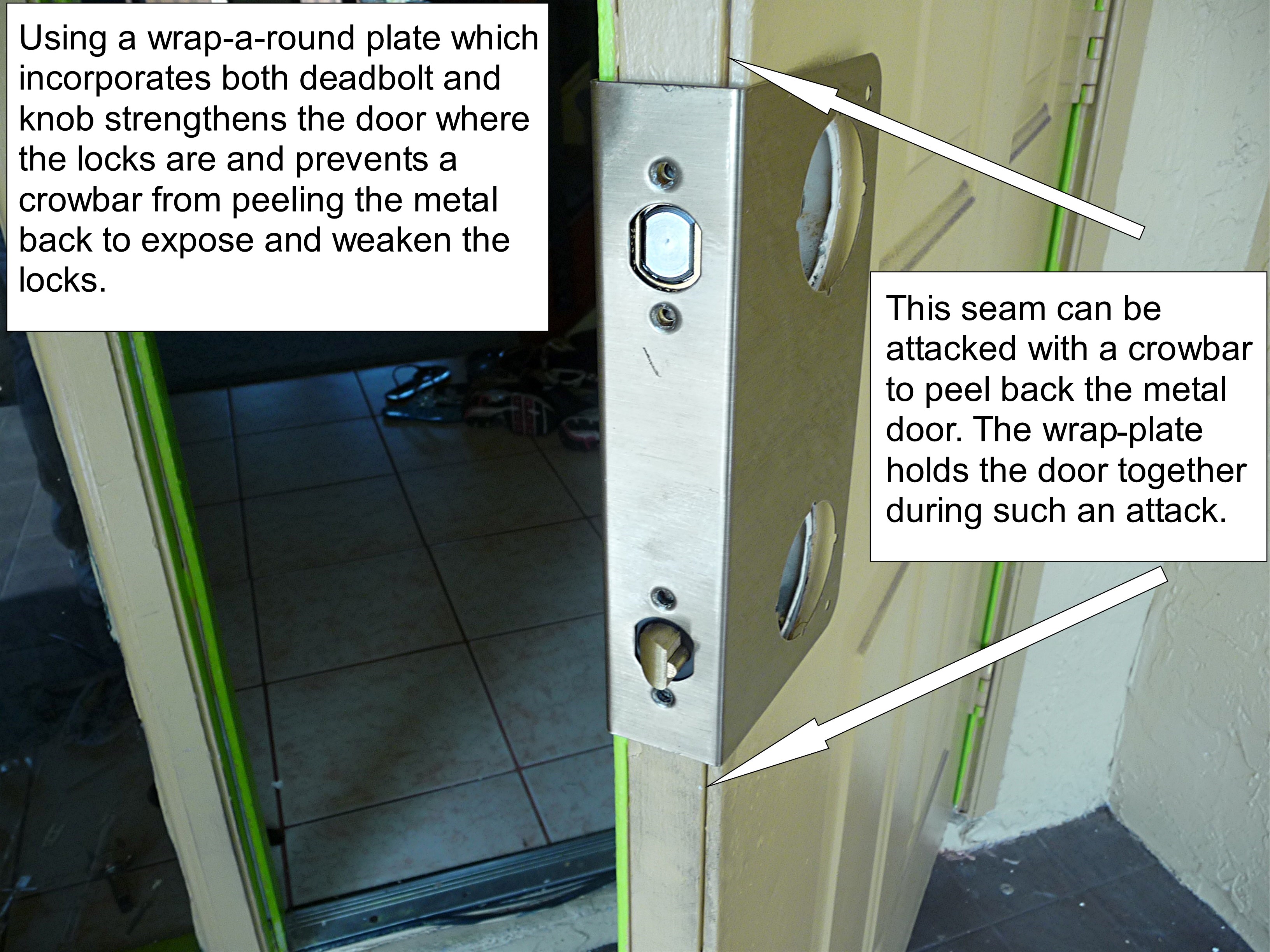
In New Jersey where I started as a locksmith many doors between the garage and the house were thin 1 3/8 inch thick doors. The wrap-plate was necessary when installing a deadbolt on thin doors because the deadbolt requires a 1 inch hole bored through the center edge of the door. 1 3/8 inch minus 1 inch leaves 3/16 inch on each side of the lock bolt. The wrap-a-round plate (in those days we used MAG brand plates) made a weak door much stronger and allowed the deadbolt to secure the door and take abuse from burglars.

